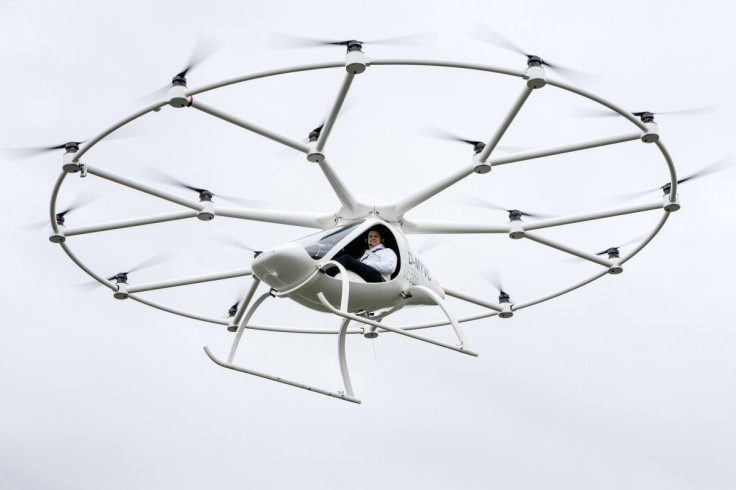Volocopter: German 18 rotor drone hybrid personal flight vehicle passes its first manned flight

The race to build viable personal flight vehicles like those in Star Wars Episode I is reaching new heights as more inventions are popping out of the woodwork. The latest invention is the Volocopter by German firm e-volo, which has just passed its first manned flight tests and received endorsement from Nasa.
The two-seater Volocopter VC200 is a multicopter that has 18 rotors powered by nine batteries. Its frame is made from a lightweight, fibre composite material, and getting the personal flight vehicle to take off and hover in the air with a 450kg payload requires 45kW of power, depending on the air pressure or temperature.
Similar to other personal flight vehicles being developed around the world today, the Volovopter is designed to take-off and land vertically. Its flight control unit contains a complete set of positioning sensors that consist of pressure gauges, gyroscopes, accelerometers, and magnetometers for all three spatial axes, and theoretically, each of these flight control units can be used to control personal flight vehicle independently to ensure stability, even if parts of the system were to fail.
Company e-volo says that to make the Volocopter possible, the firm sought technical assistance from German drone manufacturer Ascend Technologies, which was recently acquired by Intel, and e-volo was invited by Nasa to present some of the innovations in the personal flight vehicle to aerospace experts at a workshop in Washington.
Nasa has also written and published a study on the possibilities of personal flight vehicles, and how they could help to alleviate daily traffic congestion in an area such as Silicon Valley in California, in the hopes that lawmakers will one day consider changing the law to allow individual flight in urban areas.
e-volo says that it will continue to conduct manned test flights – the first flight will be 25 km/h maximum at low altitude, followed by a flight at 50km/h at medium altitude, and then finally a flight at 100km/h at even higher altitudes.
Other personal flight vehicles being developed
This is a huge step in right direction for making personal flight possible, and will likely be met with great excitement by enthusiasts, but there are other companies and individuals around the world who have also come up with inventions that are somewhat similar – although perhaps not as safe.
First, there's Flike, a personal flight vehicle designed by the Hungarian government's research institute Bay Zoltan Nonprofit. Flike is a tricopter that can carry a total weight – including payload – of 240kg. In April, Flike completed a successful manned test flight where it was able to hover and manoeuvre in the air while compensating for the wind, for 90 seconds.
There's also the Hoverbike by UK firm Malloy Aeronautics; the Quadro UAS personal flight vehicle built by Dutch UAV engineer Thorstin Crijns which carries which carries 110kg of weight (including a 59kg payload); and the Snowstorm multicopter drone built by students from the National University of Singapore (NUS), which can carry a payload of 70kg and can stay in the air for five minutes.
Finally, a remote-controlled multicopter drone by the University of Oslo in Norway set a new Guinness World Record for the heaviest payload ever lifted by a remote-controlled multicopter drone in January, and next plans to test carrying a human into the air.
© Copyright IBTimes 2025. All rights reserved.






















